Animal Poop Identification Guide
54 min read Updated for March, 2019
While wild animal waste may not be something you think about or consider on a daily basis, it will spark your interest when it shows up on your property. Being able to identify the excrement that is left behind allows you to gain valuable insight into the animals that frequent your property or, in some cases, take up residence there.
It can be unnerving to find that a wild animal is in close proximity to you and your family. It’s important to identify the animal you are dealing with so you can assess the risks, threats, and consider the next steps in evicting them from your home. There are a lot of inherent risks that result in humans being near animals and their waste. Arm yourself with the information you need to identify wildlife feces and the most common culprits leaving it behind.
TABLE OF CONTENTS
Identifying: Rat Poop
Rat Poop
Rat droppings are brown and solid in texture, measuring about half an inch in length. They are oval-shaped and may taper to a point at one or both ends.

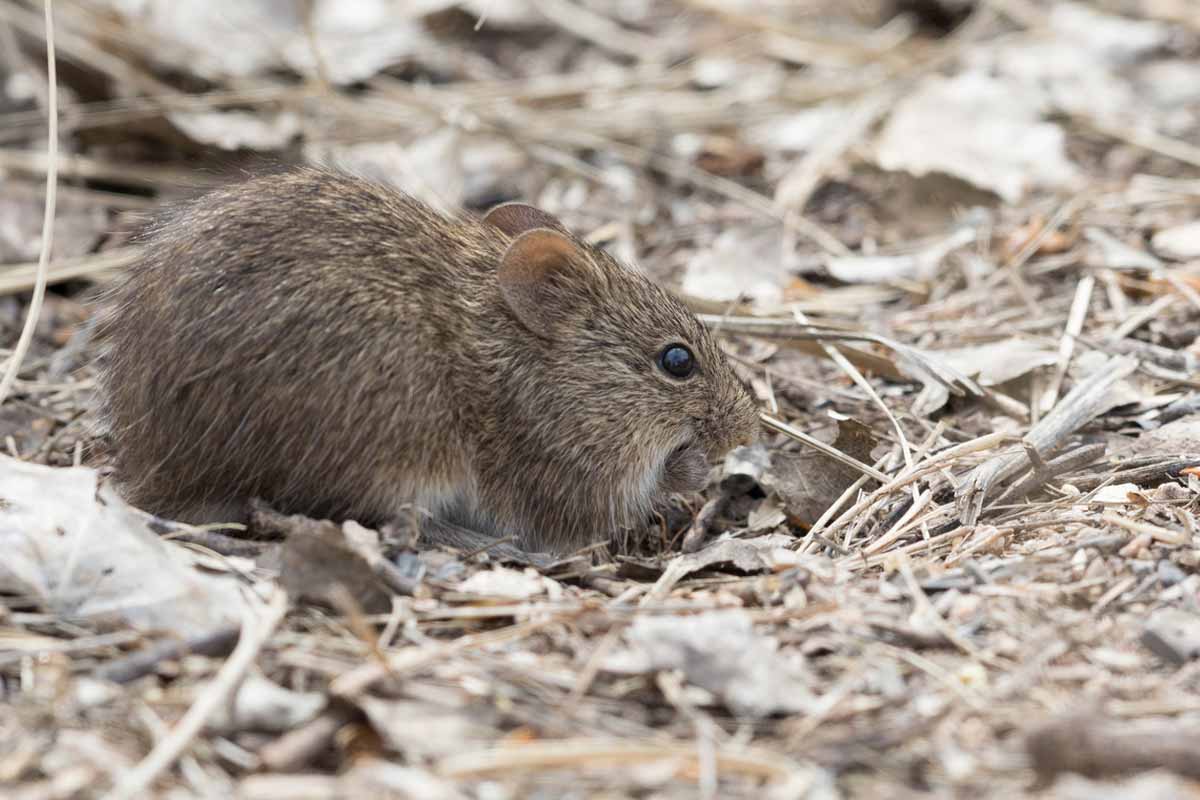
Geography
Rats can be found anywhere on Earth where humans live. There are many species of rats, but all are opportunistic and adaptable, thriving almost anywhere that food and shelter are abundant. In North America, they are most populous in the coastal regions.
Although it varies based on the species, common nesting sites for rats include areas in and around your home, warehouses, barns, cellars, garbage dumps, etc. They typically nest at or below ground level, though some species prefer more aerial nesting sites such as attics, wall cavities, trees, and roofs.
Factors to Identify
Rat droppings are brown and solid in texture, measuring about half an inch in length. They are oval-shaped and may taper to a point at one or both ends. Individual rats produce an average of 40 droppings per night, so they accumulate fast! Rats live in packs, and their droppings are left in large, scattered groups.
What to Do If Droppings Are Found
If you find droppings in or around your home, it’s an indicator that you may have an infestation, or at the very least, some frequent and unwanted visitors. Start by collecting and putting away all food, including pet food, in secure containers. After that, thoroughly clean and disinfect floors and counters.
Before cleanup can begin, make sure you take care of any active infestations. Set traps and seal up any entryways where rats can enter (which include any openings the size of a quarter and larger). The Centers for Disease Control (CDC) suggests that you continue trapping for a week after sealing off your home; once the amount of snared rodents decreases to zero then the infestation has been eliminated and the area is no longer infectious.
When you are confident that your visitors are gone, follow these steps for safe clean up:
- Open doors to ventilate and air out the space for at least 30 minutes before you begin.
- Wear heavy latex gloves (never touch or handle rodent feces with your bare hands).
- Spray the urine/droppings with a disinfectant and let soak for five minutes (do not sweep or vacuum droppings).
- Clean up droppings with a paper towel and dispose of them in an airtight bag.
- Disinfect the entire area, including any contaminated items.
- Steam clean any fabric of upholstered items such as rugs, furniture, or draperies that are in the vicinity and wash cloth items in detergent and hot water.
- Thoroughly wash your hands once cleanup is complete.
Rats carry a wide range of diseases such as Hantavirus Pulmonary Syndrome (HPS), Leptospirosis, Lassa Fever, Salmonella, Tularemia, and Rat-Bite Fever. You can contract one of these through inhalation of contaminated dust, direct contact with feces, or ingestion of food/water contaminated by urine and/or feces.
When to Call a Professional VS DIY Solutions
If you are dealing with one nest or a small-scale infestation, it is reasonable to attempt the clean up on your own. Because of the dangers associated with rodent droppings, it is essential to be thorough and to follow the steps outlined above to make sure that it is done safely and effectively.
However, rat droppings pose a severe threat to the health and safety of your family so you may want to refer to a professional service in the following instances:
- Your efforts to get rid of rats are unsuccessful, or there is a large-scale infestation.
- You are uncomfortable or unable to get into attics or crawl spaces where clean-up efforts need to take place.
- You have highly vulnerable people in your home, such as elderly parents, babies and small children, or individuals who are sick or have asthma.
- You don’t have the proper clothing and/or supplies to safely and adequately clean up rat urine and droppings.
Mice Poop
Mouse droppings are similar in size and shape to a grain of rice. Fresh droppings are very dark brown and lighten as they age.
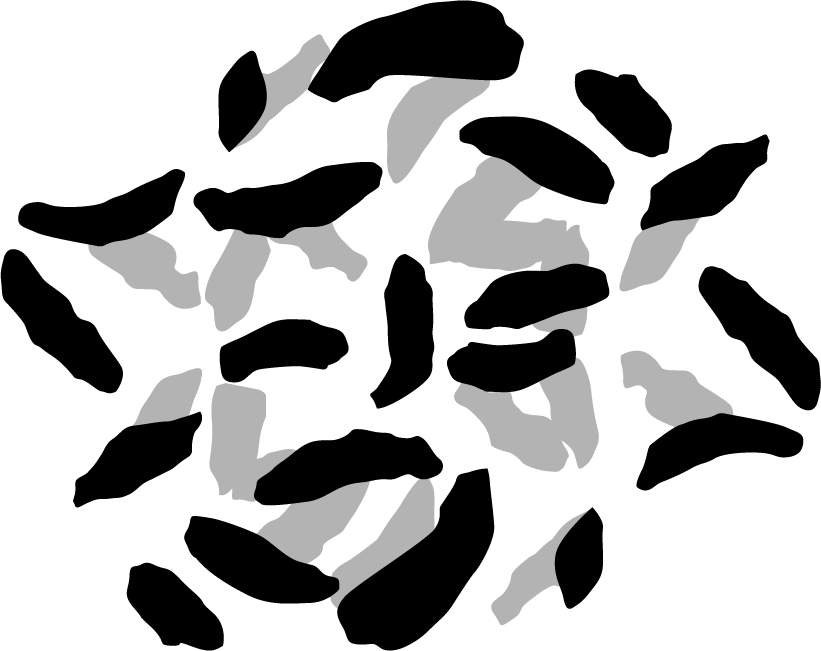
Identifying: Mouse Poop
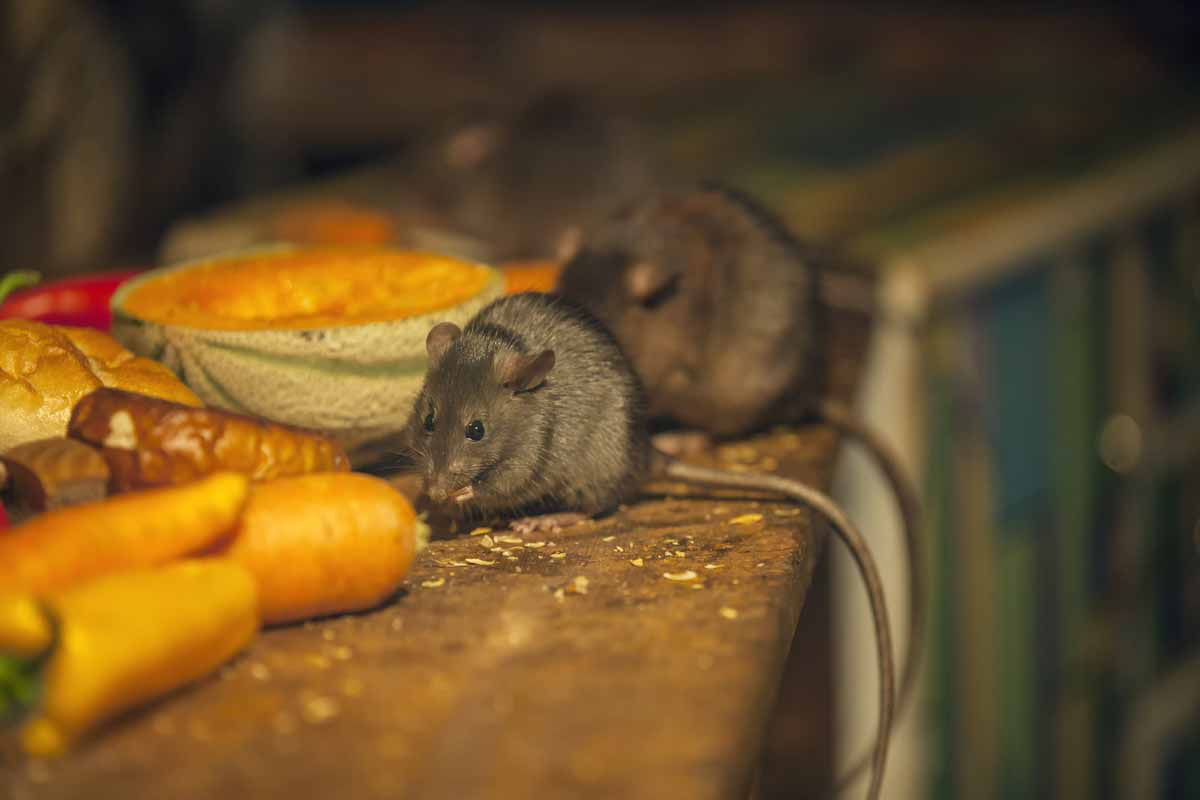
Geography
Mice are one of the most abundant and prolific creatures on Earth due to their ability to adapt and thrive in such a wide variety of environments. From forests and countryside to cities and structures, mice can create a suitable habitat most anywhere.
Mice that live in the wild dig burrows underground for protection. If you find that you have mice living in your home, common nesting sites include ceiling voids, storage containers, basements, garages, and inside walls. Mice may live outside near your home foundation or in shrubbery during the warmer months when they can find plenty of insects and seeds to eat, but they may migrate inside when food becomes scarce and the temperatures drop during the colder months.
Factors to Identify
Mouse droppings are similar in size and shape to a grain of rice. They are about an eighth to a quarter of an inch in length with pointed tips. Fresh droppings are very dark brown and lighten as they age. Droppings are typically found in large, scattered groups. They are much smaller than rat droppings, which is the key to telling the difference between the two.
What to Do If Droppings Are Found
If you find mouse droppings in your home, it is a sure sign that they have taken up residence on your property. Mice multiply very quickly, producing eight litters a year from the time they are two months old, so your infestation can quickly grow in scale. Additionally, mouse droppings pose many threats to your health, so it is crucial to address the situation immediately.
If you see large groupings of mouse droppings outside your home, this doesn’t mean that they are in your house. But it does mean that your chances for an impending infestation are high. As soon as outdoor food sources dry up in the winter and the temperatures dip, nearby mice will look to your garage, crawl space, attic, or home for warmth and food.
If you have taken precautions to get rid of mice but continue to find droppings in the same place over and over again, then a further investigation needs to be done. Look for openings near the area, filling in holes as small and narrow as a pencil. Place more traps as well, especially along walls as this is where they prefer to travel.
Before you begin to clean up after a mouse infestation, make sure that the mice are gone. Otherwise, you are wasting your time and will be repeating the process over and over. As with rats, the CDC suggests that if a week goes by without catching one, then the infestation has likely been resolved and the viruses that may be contained within the urine/droppings are no longer infectious.
At this point, you can begin the process of cleaning up after your unwanted guests. The steps for mice are the same as the steps for rats:
- Open doors to ventilate and air out the space for at least 30 minutes before you begin.
- Wear heavy latex gloves (never touch or handle rodent feces with your bare hands).
- Spray the urine/droppings with a disinfectant and let soak for five minutes (do not sweep or vacuum droppings).
- Clean up droppings with a paper towel and dispose of them in an airtight bag.
- Disinfect the entire area, including any contaminated items.
- Steam clean any fabric of upholstered items such as rugs, furniture, or draperies that are in the vicinity and wash cloth items in detergent and hot water.
- Thoroughly wash your hands once cleanup is complete.
It is very important to take action at the first sign of an infestation as rodent droppings harbor a variety of infectious diseases that can harm you and your family. This includes Hantavirus, which can lead to HPS, Salmonella, and Lymphocytic Choriomeningitis (LCMV) through contact with urine/droppings.
When to Call a Professional VS DIY Solutions
The presence of mouse droppings in your home presents serious health risks to you and your family and should be handled as quickly as possible. You can clean up on your own as long as you are thorough and follow all of the steps outlined above. If you are unsure about whether household items may have been contaminated, take steps to disinfect and clean them.
Because there are multiple health risks associated with rodent droppings, cleaning up is an urgent matter. While you can tackle it yourself, here are some instances when you may want to consult a professional service for help:
- If your efforts are not successful in eliminating the infestation, it may be a sign of a more significant, more severe problem and a professional should be contacted immediately.
- You are uncomfortable or unable to get into the areas where clean-up efforts need to take place, such as a crawl space, air duct, attic, etc.
- You have highly vulnerable people in your home, such as elderly parents, babies and small children, or individuals who are sick or suffer from asthma and allergies.
- You don’t have the proper clothing and/or supplies to safely and properly clean up mouse urine and droppings.
Bat Poop
Bat feces, also known as guano, look like dark-colored grains of rice. Unlike mouse droppings, which are solid and hard, bat droppings look like elongated pellets that disintegrate when touched.

Identifying: Bat Poop
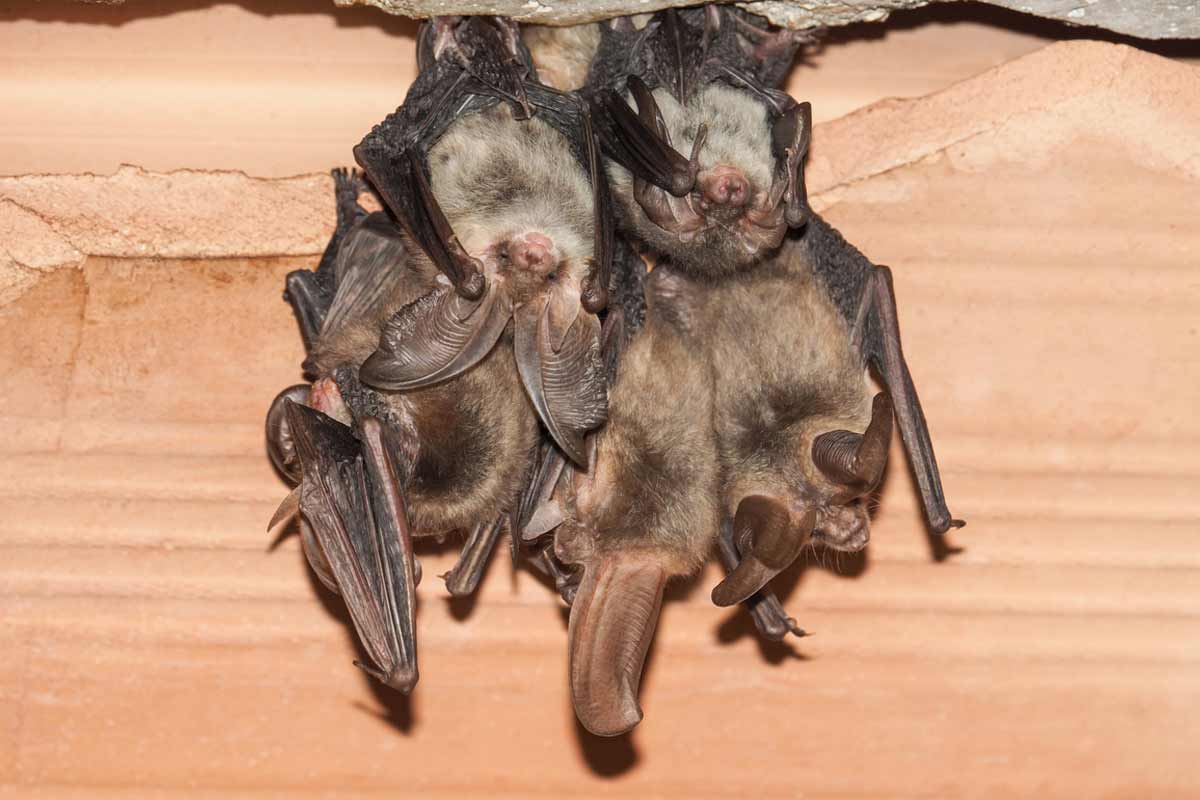
Geography
Bats are enormously prolific animals, comprising 20% of all classified mammals in the world. They are found everywhere on Earth, except for the Arctic and Antarctica. They prefer warmer climates and are most populous near the equator. There are 47 different kinds of bats found in North America and they inhabit a wide variety of environments including farmland, mountains, woods, and cities.
Bats live in colonies that may consist of anywhere from 100 to several thousand bats. They roost in trees, barns, caves—anywhere that provides shelter, protection, and seclusion.
Factors to Identify
At first glance, bat droppings look similar to mouse droppings, but a closer investigation should make it reasonably easy to tell which one you are handling. Bat feces, also known as guano, look like dark-colored grains of rice. They are found in large clusters or piles as they accumulate below the roosting site.
Unlike mouse droppings, which are solid and hard, bat droppings look like elongated pellets that disintegrate when touched. They also have a shiny or slightly metallic appearance due to insect bodies and wings they’ve consumed.
What to Do If Droppings Are Found
If you find bat droppings in or around your home, lay a piece of cardboard on top of them and wait a day to see if more droppings accumulate. If so, then you have an active bat infestation. If you find bat guano outside your home, it is also likely that the bats have infested an interior space. Bats defecate before entering their roosting sites, so use this as a clue when you start looking for their location. Because of the health risks that bat guano presents, it is essential to clean it up immediately and thoroughly.
Bats defecate 20 to 30 times a day—multiply that times a hundred bats and the guano piles up quickly. Bat urine and droppings not only smell bad, but they are also dangerous to inhale so having the proper equipment is a priority before cleanup can begin. Here are steps for safe removal of bat guano in any space:
- Wear protective clothing and a very well made HEPA-filter mask.
- Bat guano contains fungal spores that are harmful when inhaled, so lightly mist the area with an enzyme-based microbial spray to keep the spores from becoming airborne during clean up.
- Shovel the bulk of the waste (bat guano can build up rapidly depending on the size of the cloud and the amount of time they have gone unnoticed) and vacuum whatever remains.
- Place waste in a bag, tightly seal and toss in an outside trash can.
- If guano is on attic insulation or a soft, porous surface, remove and replace the contaminated material.
- Thoroughly disinfect the area with an enzyme-based microbial cleaner. You can also put the disinfectant in a fogger or mister and apply to a larger area that way.
Bats carry a host of diseases, but the primary infection that is transmitted through their droppings is Histoplasmosis. This infection is contracted when you inhale airborne fungal spores that are released from guano. The National Institutes of Health have also identified a blinding eye condition that is caused by exposure to the fungus.
When to Call a Professional VS DIY Solutions
It is recommended that you contact a professional service to help you clean up after a bat infestation. They can make sure that all entry points are securely sealed to prevent further infestation as they have the proper clothing, equipment, and knowledge to handle the mess. If removal is not done properly, you risk spreading contamination to other areas of the home.
Squirrel Poop
Squirrel droppings are cylindrical in shape with rounded edges. Because of their diet, they are brown or red in color and vary in length from eight millimeters to three-eighths of an inch in length.

Identifying: Squirrel Poop
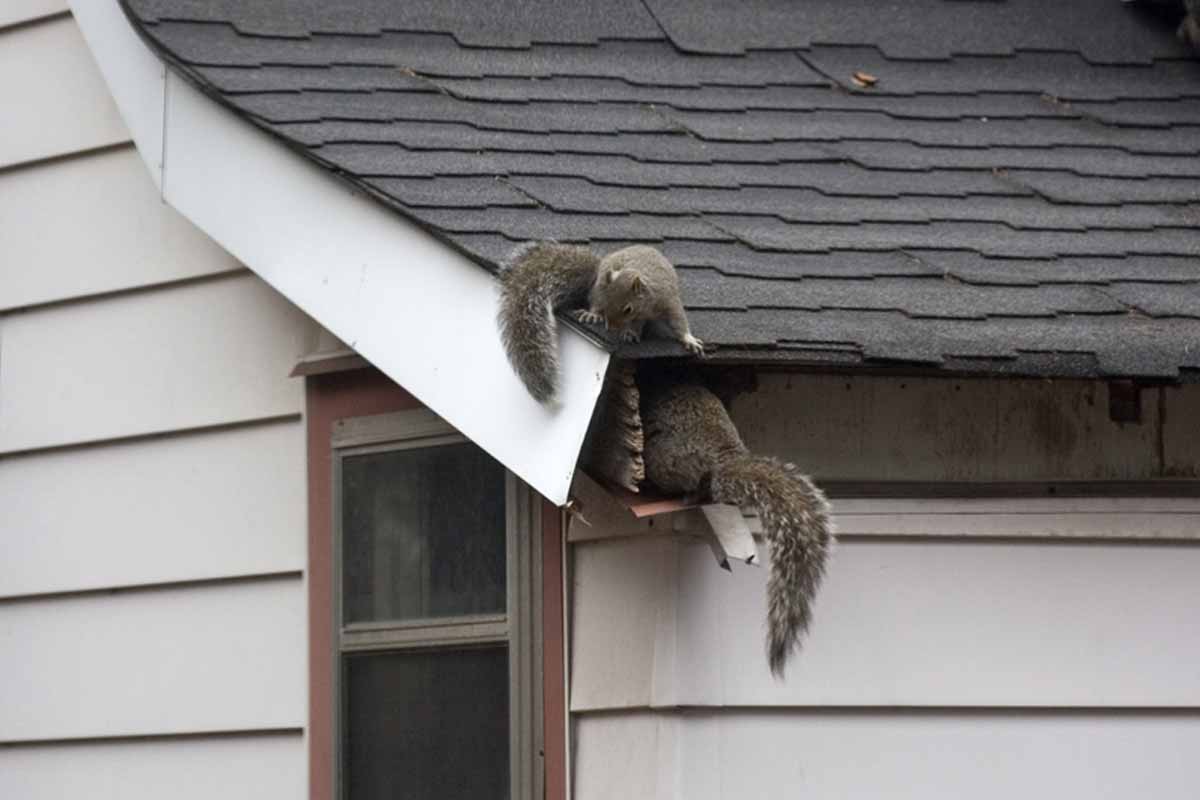
Geography
Squirrels are rodents that can be found worldwide, with the exception of polar regions and arid deserts. There are over 200 species of squirrels, so their habitats vary. Tree squirrels live in forested areas and live in tree holes or nests built on limbs or in the forest canopy. Ground squirrels dig burrows and travel through intricate tunnels underground. Flying squirrels live in nests that are formed in the crooks of branches.
Squirrels are abundant in nature, and the decrease in their natural habitats due to construction and development often lead them to seek out shelter in homes. Tree squirrels, in particular, are a nuisance for homeowners because they cause a lot of damage once they have infested your home. Squirrels are especially drawn to the warmth of attics and garages during the winter months.
Factors to Identify
Squirrel droppings are cylindrical in shape with rounded edges. Because of their diet, they are brown or red in color and vary in length from eight millimeters to three-eighths of an inch in length. Squirrels defecate at random, but you may find droppings clustered near a feeding site like a bird feeder. In appearance, squirrel droppings look very similar to rat droppings, though they may be slightly bulkier and lighten more with age.
What to Do If Droppings Are Found
Finding squirrel droppings in your home is a sure sign that you have an infestation on your hands. A squirrel infestation needs to be handled immediately as squirrels can do a great deal of damage to your home and the problem will only increase the longer you wait. Once you have evicted the squirrels from your home and have taken proper measures to exclude them from your home to prevent future infestations, you can begin the clean-up process.
Squirrels live in close proximity to all of us, especially those of us who live in wooded areas. However, if you find droppings near your home’s foundation or see them in the same spot over and over again, you should conduct a thorough investigation of the area. Make sure to seal off all entry points outside and look for signs of damage or invasion inside.
Squirrel infestations can result in massive amounts of droppings and urine. Squirrels constantly urinate while running because their urine contains strong pheromones that “signal” other squirrels. Because of this, it is imperative that your clean-up efforts are thorough and that surfaces that can’t be cleaned (like insulation) are discarded and replaced.
To avoid attracting more squirrels or other wildlife to your attic, execute a safe and thorough cleanup with the following steps:
- Wear protective clothing including a mask, and gloves.
- Make sure that the area is well ventilated before getting started.
- Use a filter vacuum to pick up the bulk of the droppings.
- Dispose of any carpet, insulation, or soft surfaces that have been contaminated and cannot be wiped clean.
- Spray the contaminated area with a disinfectant spray and allow to soak for several minutes before wiping clean, picking up any smaller bits of waste or debris.
- Disinfect the entire area with an anti-bacterial cleaner, steam cleaning soft surfaces if possible.
- Place all droppings, debris, rags, and mask in a heavy bag and secure tightly before throwing it away in an outside container.
- Launder your clothes in hot water and wash your face and hands with soap and warm water.
Make sure that you do not spread contamination or allow your skin to come into contact with any waste matter. Salmonella and Leptospirosis are both transmitted through exposure to squirrel feces, so it is important that you are cautious during the cleaning process.
When to Call a Professional VS DIY Solutions
Even a moderate squirrel infestation can lead to a lot of damage and clean up. In some cases, you may feel equipped to take that on yourself. If you are physically able to access the area (whether it is an attic, inside a wall, or in the ductwork) and you have the proper equipment, then doing it yourself is an option.
Having said that, there are circumstances when calling a professional is necessary, such as:
- If you have a large-scale infestation, a professional cleaning may be the best way to ensure that your home is free of the smells, diseases, and damage that squirrel feces can cause.
- If there are vulnerable people living in the house, like elderly adults, small children, or those who are ill or have compromised immune systems.
- If you are not physically able to get into the space to do a thorough clean up.
Coyote Poop
Not surprisingly, coyote droppings look very similar to dog feces as they are a tubular shape with tapered ends.In winter, coyote droppings tend to be darker in color with more fur and bone fragments mixed in due to the animals they’ve eaten.
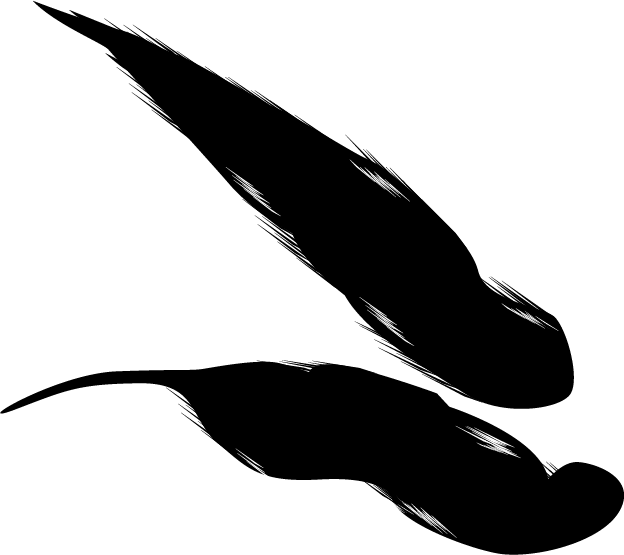
Identifying: Coyote Poop
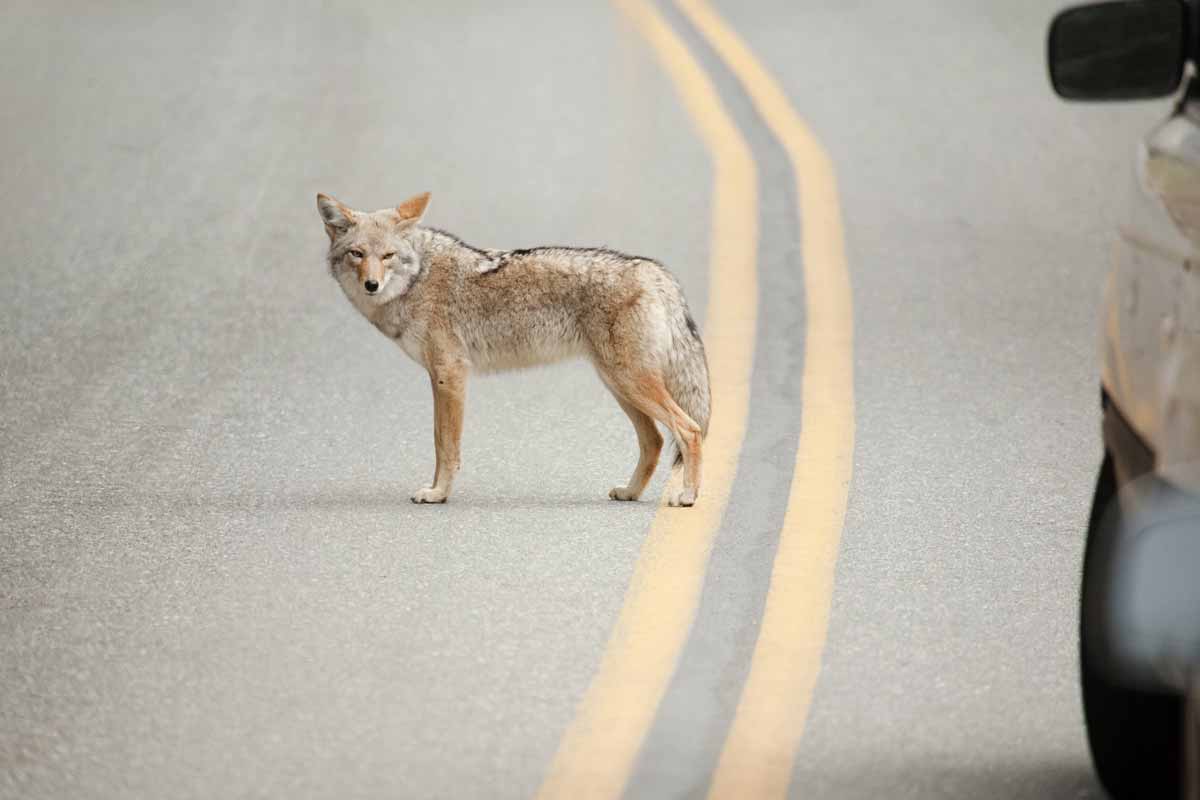
Geography
Coyotes are an extremely widespread and notable species, inhabiting nearly every area of the United States of America. They are highly adaptable and can thrive in a variety of habitats from forests and rural areas to cities and suburbs.
Coyotes often live in very close proximity to humans, especially if they have found an easy source of food on your property—anything from garbage to an abundant rodent population. Though coyotes themselves may prove to be elusive, you may see signs of their presence in the droppings that are left behind on your property.
Factors to Identify
Not surprisingly, coyote droppings look very similar to dog feces as they are a tubular shape with tapered ends. Droppings are typically three to four inches long and about one inch in diameter. The appearance of the droppings varies depending on the time of year. In winter, coyote droppings tend to be darker in color with more fur and bone fragments mixed in due to the animals they’ve eaten. Because of the fur content, the droppings can have a twisted or rope-like appearance.
In summer, droppings tend to be lighter in color due to the animal eating more vegetable matter. There will be less fur present and droppings may be brighter in color as a result of berries and fruits becoming a prominent part of their diet.
What to Do If Droppings Are Found
Coyotes use their feces to communicate with others and mark their territory. They leave excrement on the borders of their territory or on paths that they frequent. If you find coyote droppings on or near your property, it likely means that a pack has taken up residence somewhere in the vicinity.
If you have small children or pets, you need to remove the droppings to prevent the transmission of diseases and bacteria. You need to also keep a close eye on small pets, making sure to bring them in at night. A coyote will defend its territory against other coyotes and pets if they feel threatened.
It is safe to remove coyote droppings as long as you wear gloves and a mask to prevent any contact or inhalation. Coyotes harbor a variety of diseases that can be transmitted to you and your pets through contact with feces. Some of the most common include distemper and parvo, tapeworms, and heartworms.
When to Call a Professional VS DIY Solutions
In most cases, there is no need to contact a professional if you find coyote poop on your property. Coyotes typically keep to themselves and are very elusive. Removing feces from your property will not deter the coyotes from being there, so the only reason you may want to discard it is to avoid children or pets coming into contact with it.
Having said that, it can be unnerving to have a territorial animal in such close proximity to your home. Coyotes can also be a nuisance if they continue to get into your garbage and litter your property with droppings. If you continue to find droppings over an extended period of time, you may want to call a professional who can confirm that it is coyote feces and advise what measures should be taken, if any.
Possum Poop
Possum droppings are fairly large and may be confused with dog feces. Possums tend to use the same area as a latrine over and over again, so you may find quite a lot of droppings and urine in one spot.

Identifying: Possum Poop
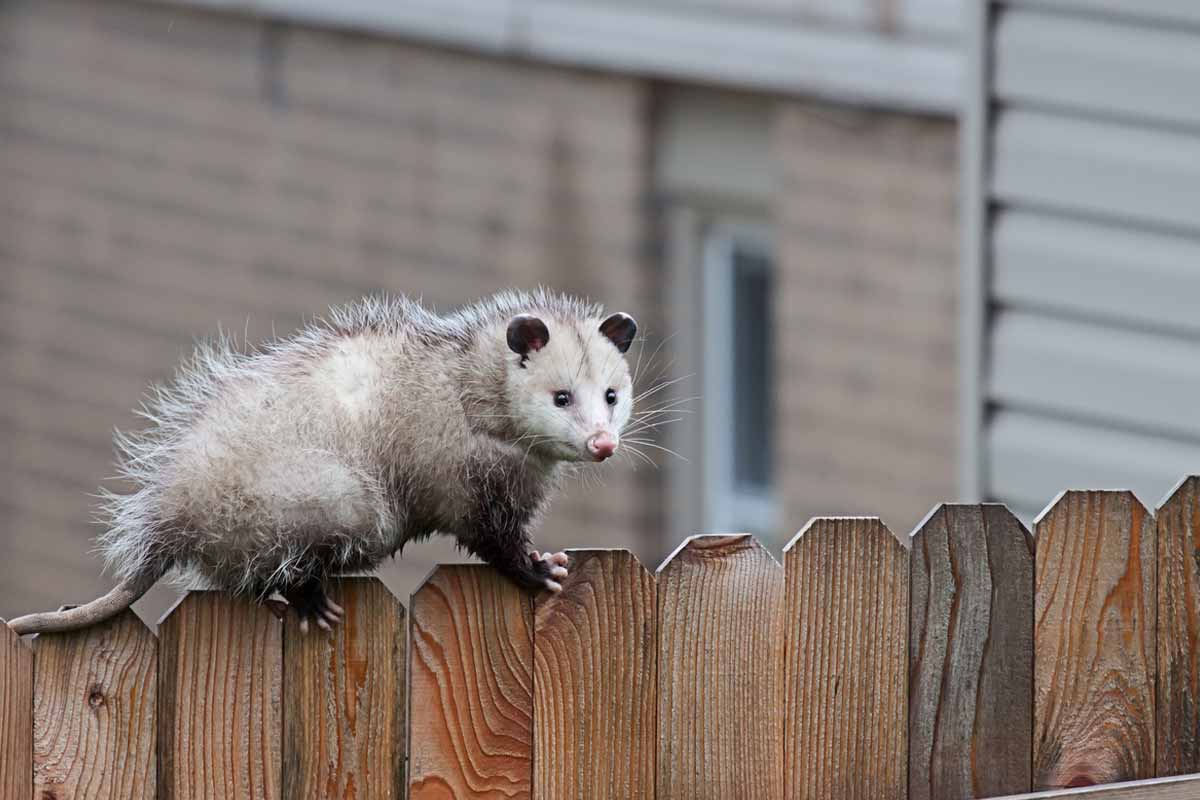
Geography
Possums are small to medium-sized marsupials (pouched mammals) that can be found in North, Central, and South America. While there are over 100 species of possums, the most common species in North America is the Virginia opossum. It can be found in most of the U.S. east of the Rocky Mountains and on the west coast.
The Virginia opossum, or common possum, lives in a variety of habitats favoring deciduous forests, woods, and farmland. They also prefer wet areas around marshes and swamps. Possums are also well adapted for life in and around suburbs and towns, often seen rummaging through trash cans or perched atop backyard fences at night.
Factors to Identify
Possum droppings are fairly large and may be confused with dog feces. They are about one to two inches in length and about ¾ of an inch in diameter. They taper at the ends and tend to curl. They are smooth on the sides and brown in color, though they may have white or yellow mold growing on the outside.
Possums tend to use the same area as a latrine over and over again, so you may find quite a lot of droppings and urine in one spot. You might find an excess of droppings around their feeding zones, which often include the base of trees or near your garbage cans.
What to Do If Droppings Are Found
If you find possum droppings in your home, it is a sure sign that you have an unwanted resident inside your home. Since possum droppings can be easily confused with those of other animals, like raccoons and cats, your first step should be to confirm that they are indeed from a possum. Once confirmed, you will want to take immediate steps to eliminate the infestation, secure your home to prevent future infestations, and conduct a thorough clean up. The most immediate issue you will encounter with the presence of possum excrement is the horrible smell, and that alone is enough to prompt a speedy cleanup.
If you find possum feces outside, conduct a thorough investigation looking for signs of a possible infestation under your house or deck or in a garage or shed. As their natural habitat continues to deplete, it is more common for possums to look for shelter from the elements and a safe place to build a nest and raise their young in and around homes.
Cleaning up after a possum infestation is nasty work, but it is important to discard all waste as quickly as possible to eliminate any health risks associated with exposure to possum feces. Here are the steps you need to follow for a thorough and effective cleanup:
- Wear sturdy gloves and a HEPA filter mask at the least; a protective suit is also recommended.
- Pick all of the large droppings by hand, placing them in plastic bags.
- Dispose of any contaminated insulation, carpet, or other items that cannot be scrubbed and disinfected. Replace as needed.
- Once the feces and contamination materials have been removed, start to clean and sanitize the entire area with an enzyme-based cleaner or strong disinfectant.
- The ideal way to apply the cleaner is using a fogger that will get into all of the nooks and crannies of the space, killing any remaining organic matter.
Like most wild animal excrement, possum droppings are dangerous to handle as they contain bacteria like Salmonella and Leptospirosis. They also carry a highly infectious disease called Equine Protozoal Myeloencephalitis (EPM), which attacks the nervous system of horses.
When to Call a Professional VS DIY Solutions
As with any infestation, it is important that the cleanup is thorough, which can be an unpleasant and time-consuming task. In most cases, you can handle the aftermath of a possum infestation yourself as long as you have the time and dedication to do it safely and effectively.
You may want to contact a professional service simply to save yourself the time and effort. However, there are times when it is necessary to call a professional including:
- If the infestation is in an area that you cannot physically access yourself, such as a crawl space or inside a wall cavity.
- If you cannot get the proper gear for the clean-up work such as a high-quality mask, the appropriate cleaning agents, or a fogger if the contamination is extensive.
- If you are unable to identify how widespread the infestation is and how much damage and mess there is to clean up, a professional can conduct a full investigation.
- If you find additional waste material, signaling that your visitors have returned after your initial clean up, you should immediately contact a professional to ensure a permanent solution to your problem.
Skunk Poop
While skunk droppings look similar to raccoons and cats, the contents may be the best way to differentiate. Skunk droppings often contain undigested insects, berries, fur, or feathers.

Identifying: Skunk Poop
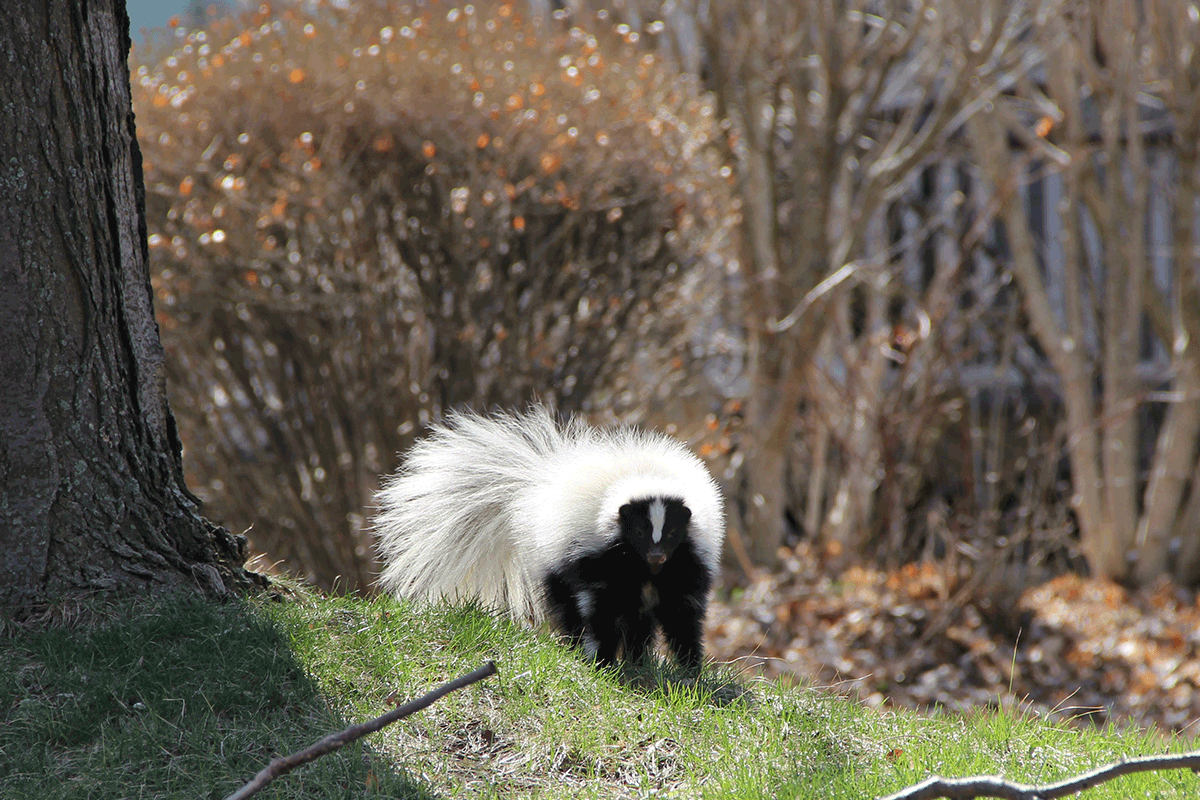
Geography
There are 12 species of skunks and four that reside in North America. The striped skunk is the most common species and can be found in every state in the U.S. They are adaptable animals that thrive in a variety of habitats, though they prefer pastures, clearings, and open land that borders a forest.
Skunks typically live in burrows that were abandoned by other animals but have been known to inhabit abandoned buildings or make a den under your deck or home.
Factors to Identify
Skunk droppings look similar to those of cats. Feces are tubular with blunt ends and typically measure one to two inches in length and one-fourth to one-half of an inch in diameter. While skunk droppings look similar to raccoons and cats, the contents may be the best way to differentiate. Skunk droppings often contain undigested insects, berries, fur, or feathers. Skunk feces are often left in lawns and gardens and are also found in and around their den. They are typically scattered, mushy, and not well-formed.
What to Do If Droppings Are Found
If you find skunk droppings in or around your home, it is a sign that one (or more) is likely living in the vicinity. Skunks will seek shelter in sheds, storage buildings, cabins, crawl spaces, and decks. At the first sign of droppings you need to conduct an investigation, looking for holes and burrows around your property.
As soon as you confirm a skunk’s presence on your property you should take immediate steps to evict it. Skunks rarely leave on their own, so a proactive approach is important. While skunks can be somewhat destructive, the main concern is their spray. It is important to get professional help to get rid of them to prevent a mishap that may lead to them spraying.
Once you have successfully eliminated your unwanted residents, you can begin the process of cleaning up the waste they left behind. Follow these steps for a safe and effective cleanup:
- Wear sturdy gloves and pick up feces using a shovel, as they may be mushy and difficult to lift with your hands.
- Dispose of waste in a plastic bag and seal tightly before placing in an outdoor trash can.
- Decontaminate the entire area using an enzyme-based cleaner or strong disinfectant.
- Dispose of any contaminated materials that cannot be scrubbed and sanitized.
- If droppings are in dirt or grass, treat the area with a combination of water and bleach to kill any remaining parasites or disease that could be transmitted to your dog or pet, which could then be transmitted to you.
Skunks do carry a number of parasites, like roundworms and tapeworms, that can be transmitted to you and your pets through feces. Harmful bacteria like Listeriosis, Salmonella, and Leptospirosis are also transmitted through contact with feces. They are also known to spread diseases that specifically affect pets such as Canine Distemper, Equine Protozoal Myeloencephalitis, and Feline Pan Leukopenia Virus, which is a viral disease that affects cats.
When to Call a Professional VS DIY Solutions
While getting rid of skunks is a job that most of the time should be left to professionals and include a full cleanup, dealing with the aftermath of an infestation is something that you can do, as long as you consider the dangers of handling skunk feces and the risks that exist.
In the following instances, it’s best to bring in the pros:
- Skunks can end up in tricky locations, like window wells and crawl spaces. Call a professional for help if you cannot physically access the area.
- If the skunk sprayed in the area that requires clean up, call a professional to help eliminate the disastrous effects of spray that can get into your interior spaces, linger, and cause damage as well.
Fox Poop
Typically, their droppings are about two to three inches long with pointed ends. They can range in color from light tan to dark brown.

Identifying: Fox Poop
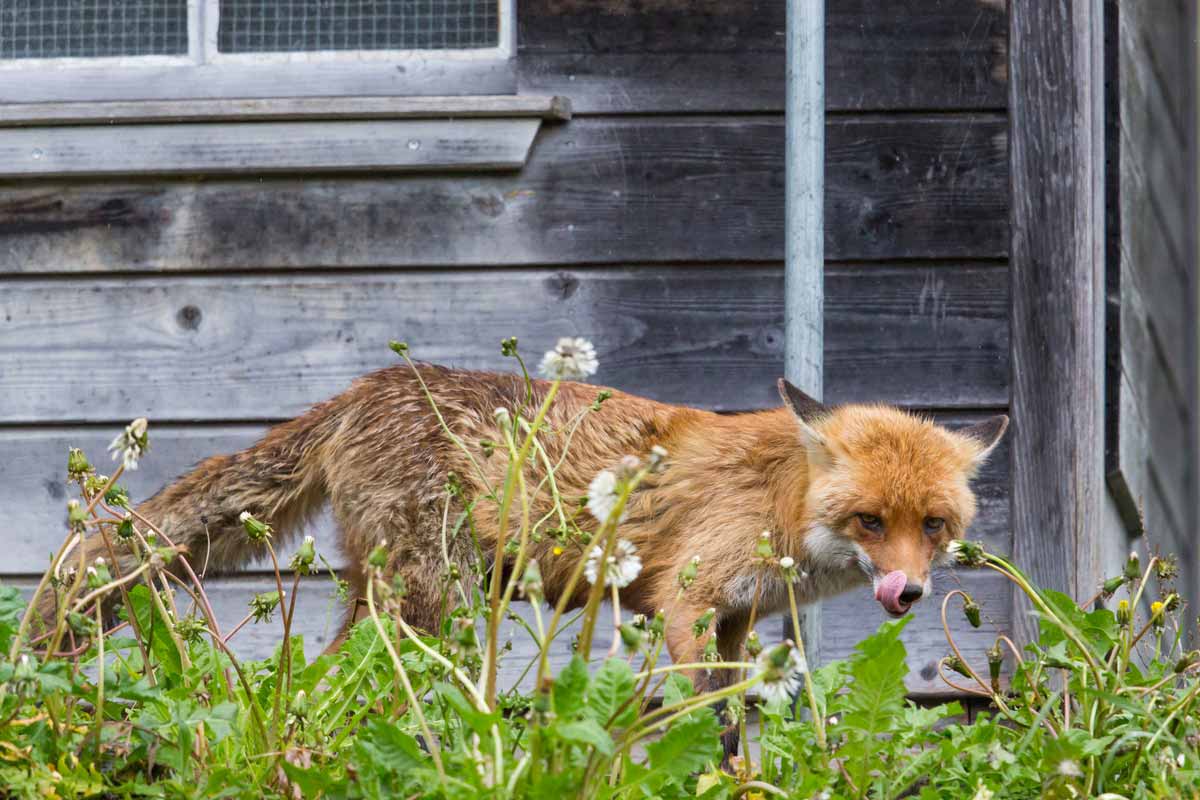
Geography
There are 37 different kinds of foxes, but only four can be found in North America. Of those, the most common are the red and gray foxes. Red foxes are found in nearly every state in the U.S., though they are sparse in the Southwest. They thrive in forests, mountains, fields, wetlands, and even suburban neighborhoods. Gray foxes are abundant on the West Coast and favor woodland habitats and areas with a thick brush that provide ample cover and shelter.
It is not uncommon for foxes to create dens below existing structures like porches, decks, or sheds which is a place for birthing and raising kits.
Factors to Identify
The appearance of fox droppings can vary depending on where they live. In rural areas, where their diet consists of small birds and mammals, their scat tends to be long and twisted and may contain bits of bone and fur. In urban areas, foxes tend to eat more meat, bread, and bird seed; their feces tend to look more like that of a small dog.
Typically, their droppings are about two to three inches long with pointed ends. They can range in color from light tan to dark brown.
What to Do If Droppings Are Found
If you find fox droppings around your home, then obviously you have a visitor. It may be hanging around because it has found food. If it is Spring, and you consistently find droppings, the fox may have made a den on your property to raise kits.. In either case, you need to remove the droppings if you have a dog or a small child that is at potential risk of contact with the feces.
If a fox has created a den on your property, it is okay to leave it alone and enjoy watching the parents with their kits. It is a temporary situation as the foxes will move on within a few months when the kits are ready to leave the den.
Remove fox excrement in the same way you would discard dog feces. Wear gloves to eliminate any contact with the droppings and place them in a plastic bag. Seal tightly and throw the bag away in an outdoor trash can. If you have dogs or children, treat the ground under the droppings with a mixture of bleach and water to ensure that no parasites remain that can be transmitted.
Contact with fox droppings presents a number of health risks to you and your pets. Their droppings often contain parasites like roundworms and tapeworms, which can also contaminate the soil underneath.
When to Call a Professional VS DIY Solutions
When it comes to the safe removal of fox droppings, there is no need to contact a professional unless you need help confirming the identity of the animal. If you need to remove the excrement, a pair of gloves and a plastic bag will do the trick.
Snake Poop
Snakes excrete oblong, liquid droppings that have a white cap of urea. There may be visible bits of bone or hair from the prey that they have consumed.

Identifying: Snake Poop
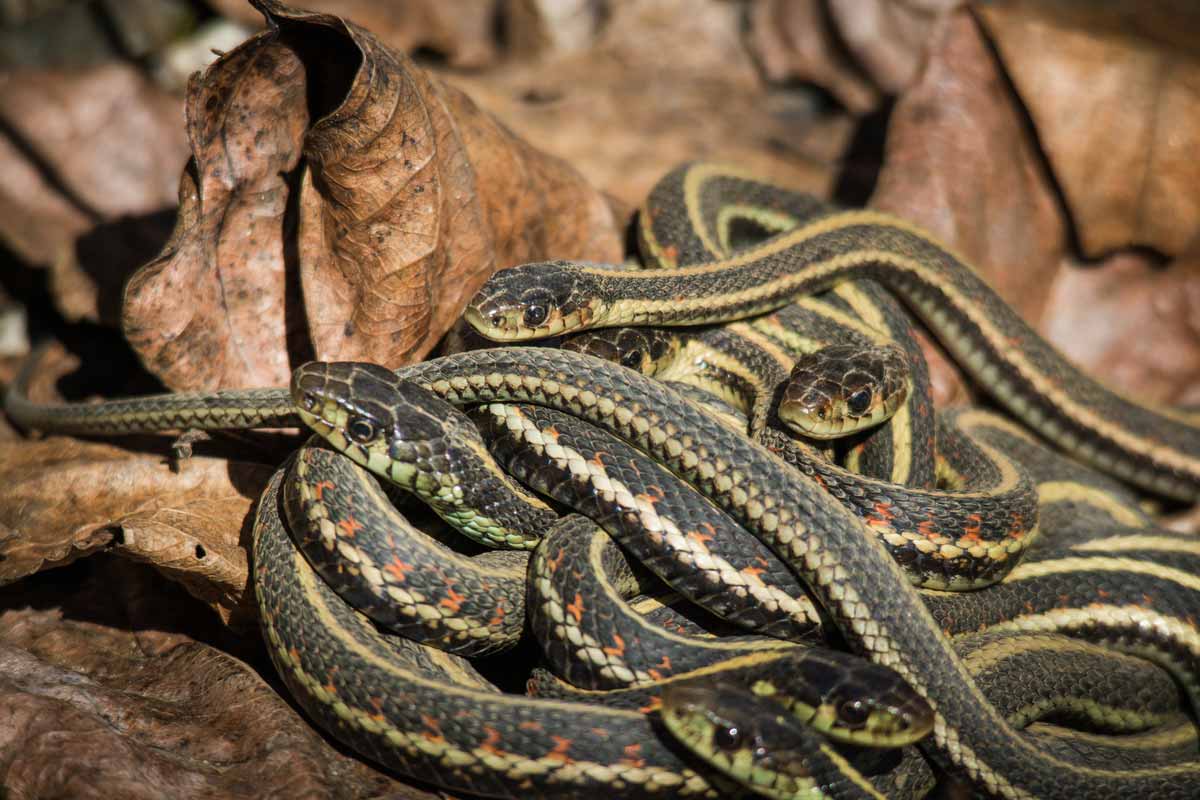
Geography
There are over 3,000 species of snakes. They appear almost everywhere on Earth except for Antarctica and some select islands. They can be found in a variety of habitats from deserts, forests, swamps, and grasslands among others. Many snakes live underground in burrows or under rocks while others live in the water most of the time.
The only thing they cannot tolerate is cold, so snakes that live in cold environments hibernate during the winter months. Some hibernate underground, and some find warm spaces, like the inside of your home.
Factors to Identify
Snake feces are similar to those of other animals in that they are usually brown and they smell. Snakes excrete oblong, liquid droppings that have a white cap of urea. There may be visible bits of bone or hair from the prey that they have consumed. Snakes are strict carnivores, so you will never find seeds, grass, or vegetation in snake droppings.
Snake feces are sometimes mistaken for bird droppings because of the watery, liquid consistency. However, bird droppings are whiter in color because there are higher levels of urea in their waste. They may also be mistaken for lizard feces, which are more pellet like, whereas snake feces appear in long, watery streaks. Snakes do not eat frequently, so you will not find feces left in the same areas on a regular basis.
What to Do If Droppings Are Found
If you find snake feces inside your home, there is likely an infestation, and you should contact a professional to investigate. It is impossible to identify a snake by its droppings, so it is best to assume that the snake is of the poisonous variety and use caution. The most common infestation sites are attics and basements, and an infestation may also indicate the presence of rodents.
Finding snake feces outside your home is not uncommon, especially if you live in a rural area. Most of the time, snakes are just passing through and have already left. However, if you find it in the same spot consistently, it likely means that there is an infestation nearby.
Once you have identified the source of the excrement and any infestation has been eliminated, it is safe to clean up and remove any remaining droppings yourself using the following guidelines:
- Wear sturdy gloves to avoid contact with your skin.
- Because of the consistency, you may require a shovel to lift snake feces from the ground or surface.
- Thoroughly disinfect the area with an enzyme-based cleaner to eliminate smell and bacteria that may linger on the surface.
The main risk associated with snake feces is Salmonella, so it is vital to eliminate snakes and their waste to prevent health risks to you and your family.
When to Call a Professional VS DIY Solutions
Because of the risk of getting bitten or coming into contact with contaminated areas, you should contact a professional at the first sign of snake feces in your home. They are trained to understand the habits of snakes, how they may have entered, and in the use of proper safety measures when dealing with the creature and its waste.
If a snake is hanging out a little too close to your home, but it has not entered, snake traps are very effective, allowing you to catch and remove the nuisance. If you continually find snakes in your yard or garden, you may want to contact a professional who can help you find ways to change your landscape so that it is less attractive to snakes.
Rabbit Poop
Bunny poops are usually round, and have a similar size and shape to garbanzo beans. The coloring will be dark brown to black or slightly green due to their diet of grasses and other vegetation.
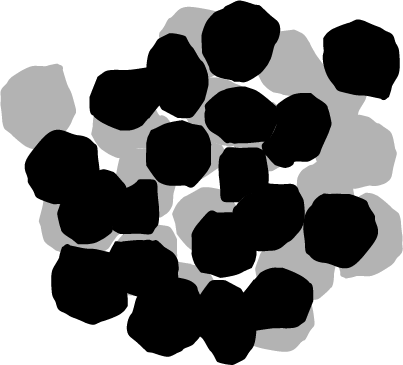
Identifying: Rabbit Poop
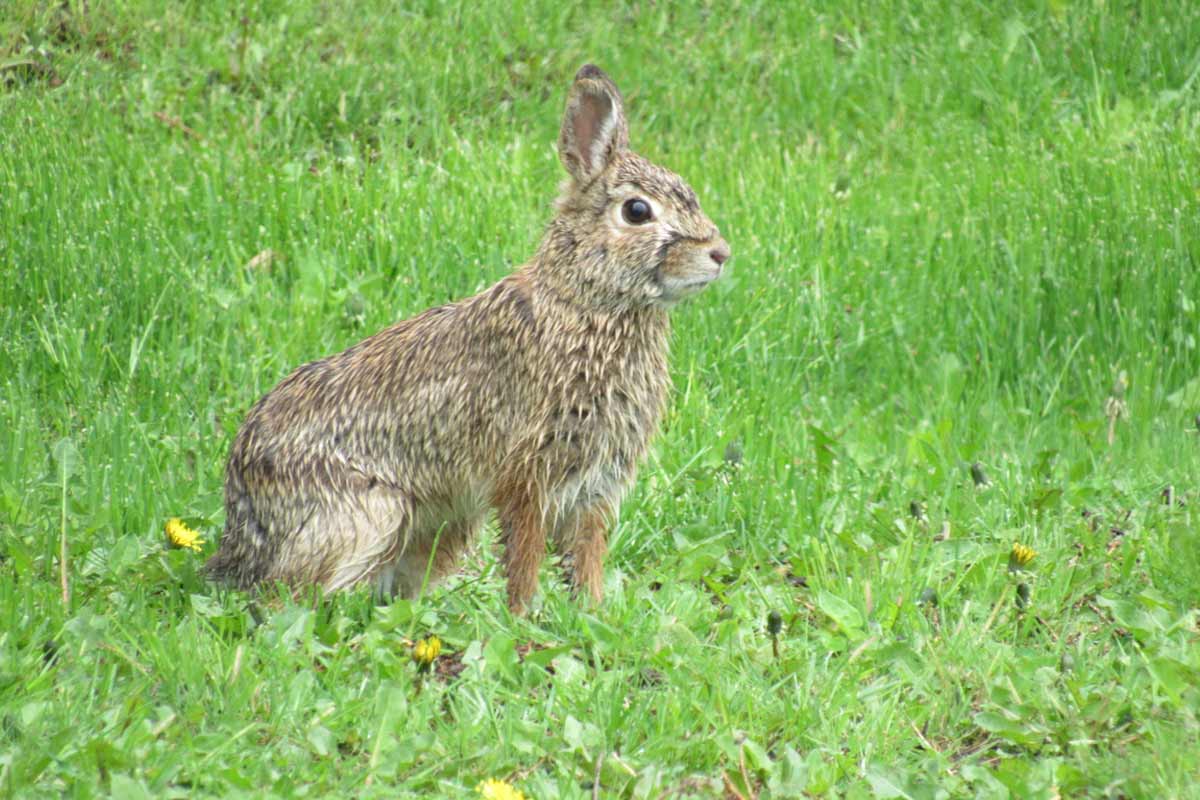
Geography
Rabbits can be found throughout the most of the United States. There are 15 different species in North America alone, and each enjoy a variety of different habitats. Some species are more common in cold climates, while there are species that live well in swamps, and others are easily spotted in both urban and suburban settings.
Factors to Identify
If you have bunnies on your property, they won’t be hard to identify. Not only are bunnies easy to spot, but they’re known to poop up to 300 times per day, leaving plenty of evidence. Bunny poops are usually round, and have a similar size and shape to garbanzo beans. The coloring will be dark brown to black or slightly green due to their diet of grasses and other vegetation.
What to Do If Droppings Are Found
If you find rabbit poop around your property, you’ll likely spot the culprits soon after. Rabbits are skittish and will hop away if you come too close, but they like to feed on grasses and other vegetation where they’re easily visible while they’re feeding.
Usually, rabbits and their droppings won’t cause any problems to you or your property. However, if you own dogs that go outside there is a possibility they could ingest the rabbit poop and contract diseases. Also, if you feel that the rabbit poop is culminating in walkable areas where it could easily be stepped on, you should take steps to clean it up.
When cleaning up rabbit poop, it’s usually small and firm enough to be able to sweep it away with a broom. If you feel you need to pick up the poop yourself, be sure to wear gloves.
If you see droppings, you should also inspect your property for any holes the rabbits may have dug up. This could be indicative that the rabbits have picked your lawn as a long-term nesting spot, and the damage they do could affect your garden, vegetation, or even your home if they get too close.
When to Call a Professional VS DIY Solutions
Rabbit poop can cause a big mess in gardens and lawns because of the quantity and frequency in which they poop. Furthermore, if you own outside pets they could easily contract diseases from ingesting the poop or getting it on themselves.
Inspect the amount to determine if it can be taken care of with DIY solutions. If the amount seems excessive or it’s already causing harm to your property or family, call a wildlife professional to have them clean up the waste and remove the rabbits as soon possible.
Chipmunk Poop
Chipmunk poop looks similar to mouse droppings; they’re small pellets that are usually tapered at the ends. Luckily, it’s actually rare to see chipmunk poop.

Identifying: Chipmunk Poop
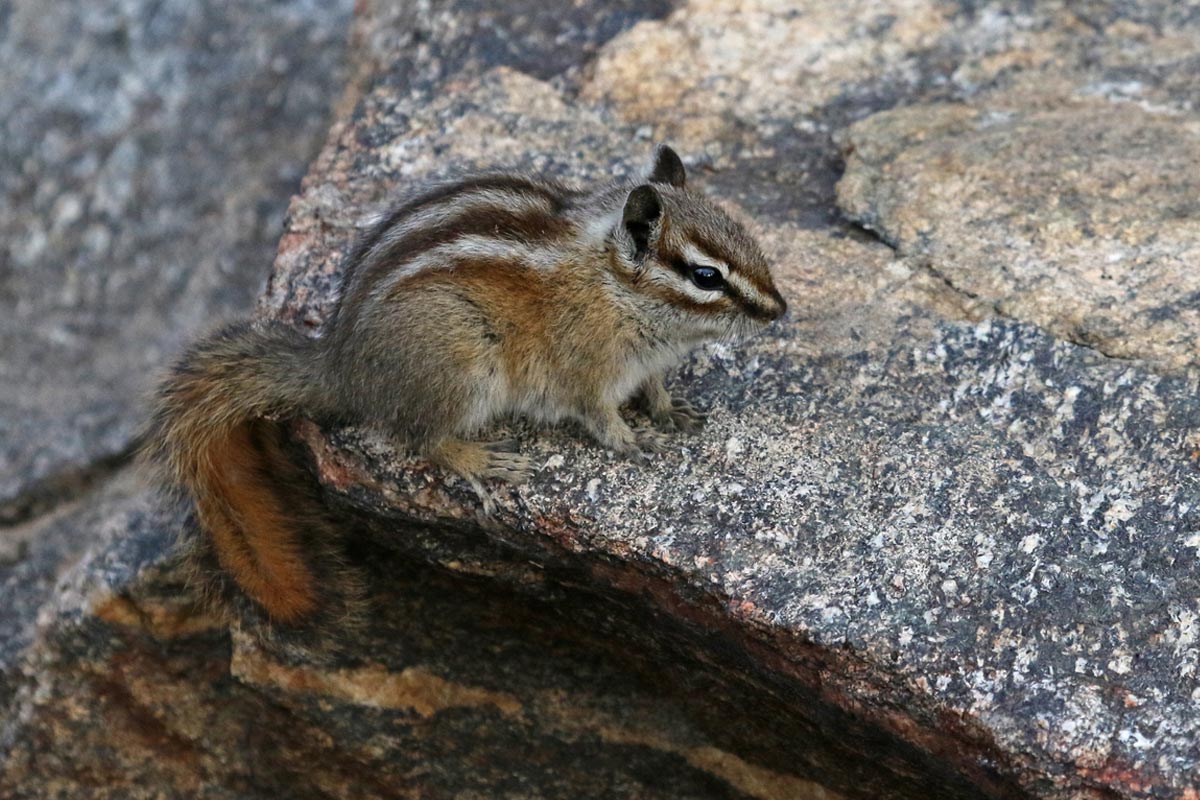
Geography
Most chipmunk species are found throughout North America, so they’ve adapted to a wide variety of habitats. While many species enjoy forests and deserts, they’re also one of the most common critters you’ll find in your own lawn.
Factors to Identify
Chipmunks behave similar to squirrels, but they’re usually about half the size. They’re usually a gray or reddish-brown color, and they have a signature white stripe that goes across their backs. Like squirrels, they also have bushy tails that they use to help with balance as they run quickly across the ground and up trees.
Chipmunk poop looks similar to mouse droppings; they’re small pellets that are usually tapered at the ends. Luckily, it’s actually rare to see chipmunk poop. These critters burrow in the ground and create tunnels, as they have designated areas within their burrows where they choose to do their business.
What to Do If Droppings Are Found
While it may be rare to find chipmunk poop in your yard, it can be helpful to identify them if you’ve seen burrows and tunnels and aren’t sure what type of animal has set up camp. Chipmunks, like squirrels and other lawn critters, can be harmful to your property through the damage they cause to gardens and the holes that burrow into the ground.
Since chipmunks are so small, it’s also easy for them to get inside homes – especially attics and basements. If you identify chipmunk droppings in your home, start inspecting to see if there are holes they might be using to get inside, and look to see if they’ve set up a burrow somewhere in your home.
When to Call a Professional VS DIY Solutions
If you’ve identified a chipmunk burrow in or around your home, call a wildlife professional to take care of it for you. Especially if the chipmunk has had babies, it won’t be an easy feat for you to do on your own. Many professional services are able to remove the chipmunks, clean up their mess, and seal up their entryways all in a matter of a couple visits.
Raccoon Poop
If you see raccoon poop, it will be two to three inches long and tube-shaped. Some say that their poop looks similar to dog poop.

Identifying: Raccoon Poop
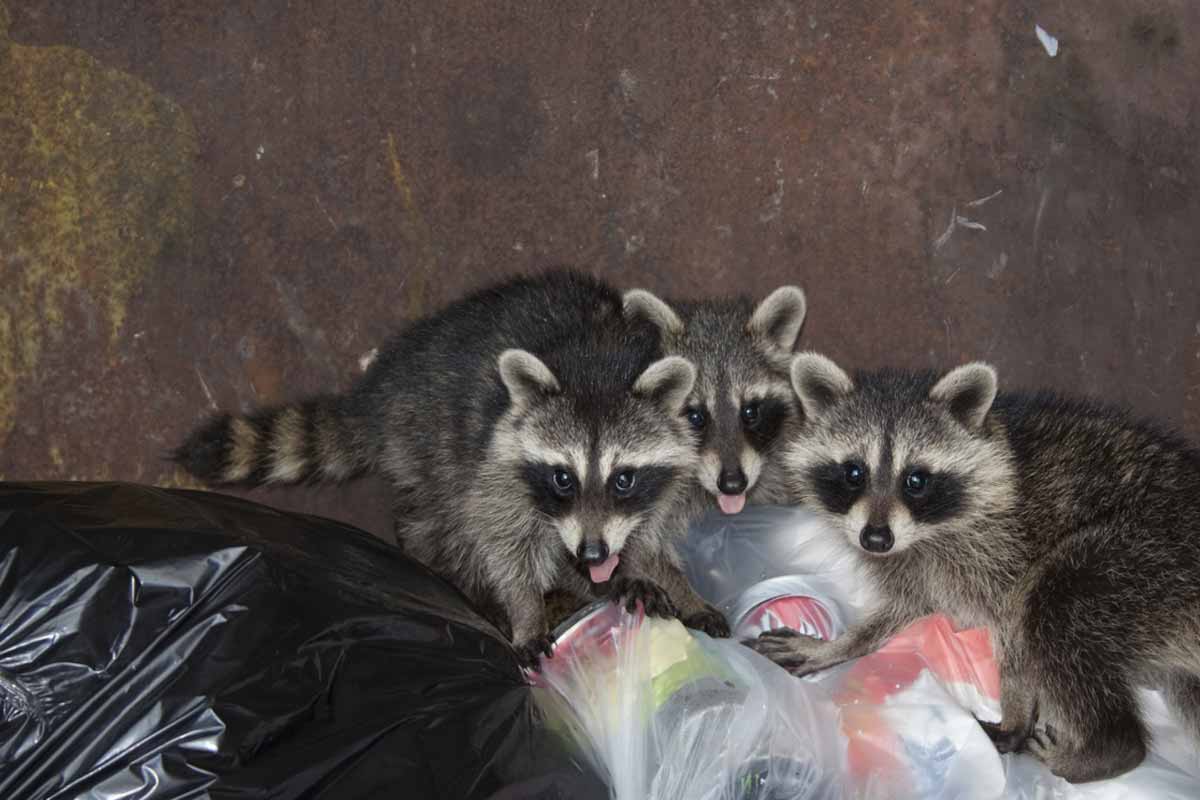
Geography
If you haven’t ever seen a raccoon, you’re still likely to see one at some point in your lifetime. These cat-sized animals are known to eat anything, and they usually show up in yards to scavenge through trash cans and chase off house pets. They can be found in cities and neighborhoods as well as forests, swamps, grasslands, and prairies. To some, the bandit-style markings on their face might be cute, but they’re an accurate look for a species that loves to sneak around and cause mayhem.
Factors to Identify
Raccoons are easy to identify because of the markings on their face. While the rest of their body is covered in grayish-white fur, the hair around their eyes is fully black, just like a typical bandit mask. They’re about the size of a large cat, but they can also walk on their back legs a little bit, which can make them look larger. They also have small human-like hands that they use to grab food, trash and prey.
If you see raccoon poop, it will be two to three inches long and tube-shaped. Some say that their poop looks similar to dog poop, but you can tell the difference because raccoons will usually have bits of undigested food in their feces.
What to Do If Droppings Are Found
Despite raccoons making a mess in trash cans and lawns, they have a pretty organized way of relieving themselves. Instead of leaving droppings wherever they please, they’ll choose a place where multiple raccoons can leave their feces – much like a designated latrine or bathroom. This mitigates the mess that can be caused by raccoon droppings, though this designated area will cause big problems for you if it’s located near your home.
When to Call a Professional vs. DIY Solutions
If you see raccoon poop in your yard, it’s likely already time to call a professional. Finding a raccoon latrine means there are several nearby that are using the same area to relieve themselves. If the proper measures aren’t taken ahead of time, the waste will continue to build up. Raccoon feces carry diseases and harmful bacteria that can affect your family and pets. If you try to DIY remove the feces yourself, you could be risking exposure to disease.
Summary
The presence of wild animals, especially when it involves an infestation in your home, can be an unfortunate and unnerving situation. But the sooner you identify the nuisance, the sooner you can evict them and remove their harmful waste. Therefore, the next time you are faced with an unknown animal on your property, use our guidelines to identify the culprit and properly handle the situation.
While we have only covered a handful of common animals, a lot of these guidelines and tips can be applied to a wide variety of scenarios. The next time you see animal waste, don’t just sidestep it. Use it to learn more about the animals that are living around you so that you can avoid common hazards that might have severe implications to your environment and health.
Sources:
www.cdc.gov/rodents/diseases/direct.html
www.reconnectwithnature.org/news-events/big-features/scattergories-the-scoop-on-animal-poop
www.mspca.org/animal_protection/what-animal-is-it/
ipcblog.org/2012/08/07/i-didn%E2%80%99t-know-that-poop-could-be-so-harmful-2/
www.discoverwildlife.com/how-to/identify-wildlife/how-to-identify-animal-droppings/
wildliferemovalusa.com/rat-feces.html
www.havahart.com/rat-facts#disease
www.tomcatbrand.com/en-us/library/identifying-mice-rats/telltale-signs-rodent-infestation-do-you-have-rats-or-mice
eastsideexterminators.com/how-to-get-rid-of-a-rat-infestation-by-yourself/
www.humanesociety.org/search?keys=Mice+%26+Rats
www.doyourownpestcontrol.com/house_mouse.htm
www.crittercontrol.com/services/bats/bat-guano
icwdm.org/wildlife/bat/BatGuano.aspx
batsintheattic.org/
www.squirrel-attic.com/feces.html
www.squirrelcontrol.ca/blog/are-squirrel-droppings-dangerous/
www.foremostcoyotehunting.com/2017/03/animal-feces-coyote-poop.html
www.crittercontrol.com/services/coyote/coyote-droppings
possumfacts.com/
www.nhptv.org/natureworks/opossum.htm
wildlifemanagementpro.org/animal-control/skunks/poop/
homequicks.com/skunk-droppings-identification-dangers
www.thefoxwebsite.net/disease/diseaserisks
www.snake-removal.com/house.html
www.crittercontrol.com/services/snakes/snake-feces